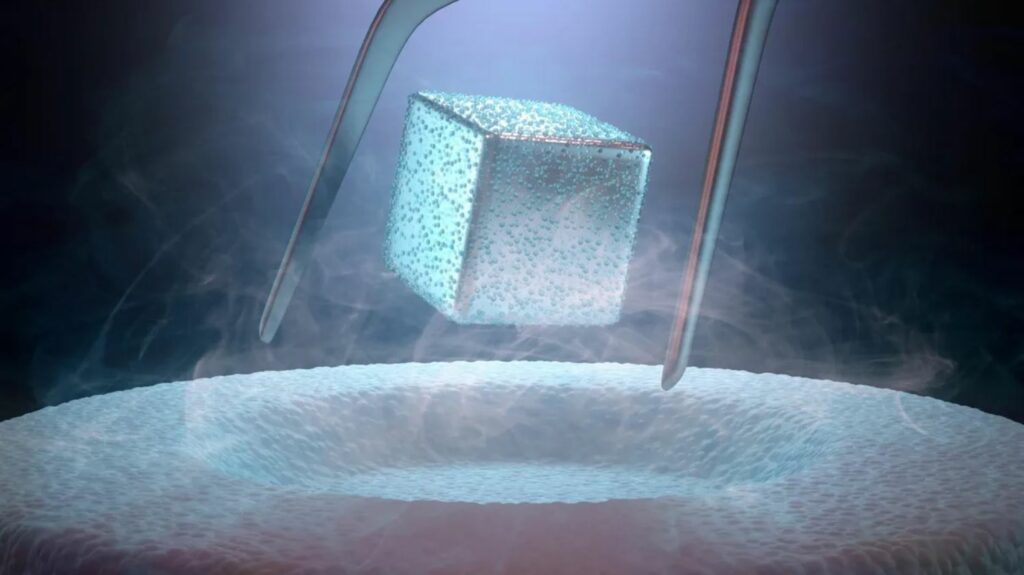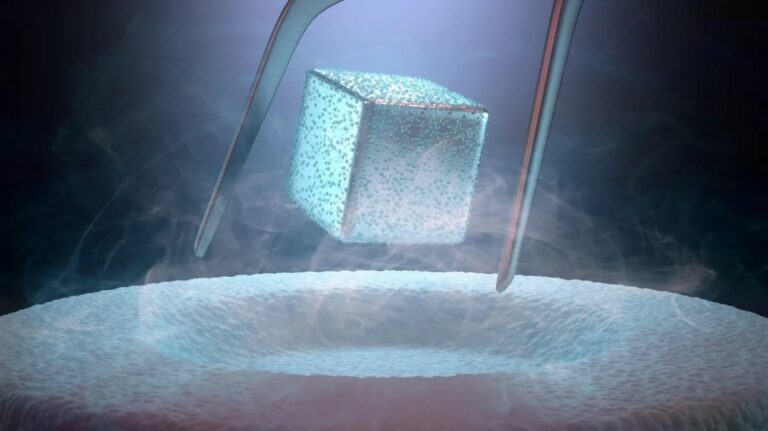Scientists discover strange ‘singularities’ responsible for exotic type of superconductivity
Superconductors that work at temperatures much higher than absolute zero have befuddled scientists since they were discovered. A new theory might be about to change that.
Physicists have uncovered a mysterious mechanism responsible for high-temperature superconductivity, and it could help in the search for one of the “holy grails” of physics.
The new finding, known as oscillating superconductivity, identifies a process that enables materials to superconduct at much higher temperatures than normal — paving the way for the discovery of room-temperature superconductor materials that could facilitate the near-lossless transmission of energy. The researchers published their findings July 11 in the journal Physical Review Letters.

“One of the holy grails of physics is room-temperature superconductivity that is practical enough for everyday-living applications,” Luiz Santos, an assistant professor of physics at Emory University, said in a statement. “That breakthrough could change the shape of civilization.”
Superconductivity emerges from the ripples caused by electrons as they move through a material. At low enough temperatures, these ripples cause atomic nuclei to become drawn to each other, in turn causing a slight offset in charge that attracts a second electron to the first.
The force of this attraction causes something strange to happen: Instead of repelling each other through the force of electrostatic repulsion, the electrons get bound together into a “Cooper pair.”
Cooper pairs follow different quantum mechanical rules than those of lonesome electrons. Instead of stacking onto each other to form energy shells, they act like particles of light, an infinite number of which can occupy the same point in space at the same time. If enough of these Cooper pairs are created throughout a material, they become a superfluid, flowing without any loss of energy from electrical resistivity.
The first superconductors, discovered by Dutch physicist Heike Kamerlingh Onnes in 1911, transitioned into this zero electrical resistivity state at unimaginably cold temperatures — near absolute zero (minus 459.67 degrees Fahrenheit, or minus 273.15 degrees Celsius). Yet, in 1986, physicists found another type of material, called a cuprate, which becomes a superconductor at a much warmer (but still very cold) minus 211 F (minus 135 C).
Physicists hoped this discovery would lead to the finding of room-temperature superconductors, which would open the door to the near-lossless transmission of electricity. Yet the discoveries petered out, and recent claims of room-temperature superconductors have ended in scandal and disappointment.
Until now, the failure to find room-temperature, ambient-pressure superconductors has partly stemmed from a lack of understanding among physicists of the theoretical conditions that permit electrons to form Cooper pairs at relatively high temperatures (roughly three times as low as a standard freezer’s temperature).
To investigate this, the researchers behind the new study focused on a particular form of high-temperature superconductivity that emerges when Cooper pairs arrange into oscillating patterns known as charge density waves. The relationship between the waves, a kind of mass synchronized dance between paired electrons across a material, has a complex connection to superconductivity: In some circumstances, the waves drown out the effect, while in others, they aid in gluing electrons together.
By modeling these waves, the physicists found that the key to the waves’ emergence was likely a property known as a van Hove singularity. Usually, in physics, the energy of a moving particle is, rather intuitively, related to the speed at which it’s traveling.
But some material structures break this rule, enabling electrons with different speeds to exist at the same energies. When all of the electrons’ energies are equal, they can interact and pair up to form dancing Cooper pairs more readily.
“We discovered that structures known as Van Hove singularities can produce modulating, oscillating states of superconductivity,” Santos said. “Our work provides a new theoretical framework for understanding the emergence of this behavior, a phenomenon that is not well understood.”
The physicists stressed that, so far, their work is purely theoretical, meaning that more experimental efforts will be needed to flesh out the underlying mechanism. However, they hope that by establishing a foundation between van Hove singularities and dancing waves, they have found a connection that other physicists can build upon.
“I doubt that Kamerlingh Onnes was thinking about levitation or particle accelerators when he discovered superconductivity,” Santos said. “But everything we learn about the world has potential applications.”
Source:SpaceCom
Do not forget to share your opinion with us to provide you with the best posts !




0 Comments